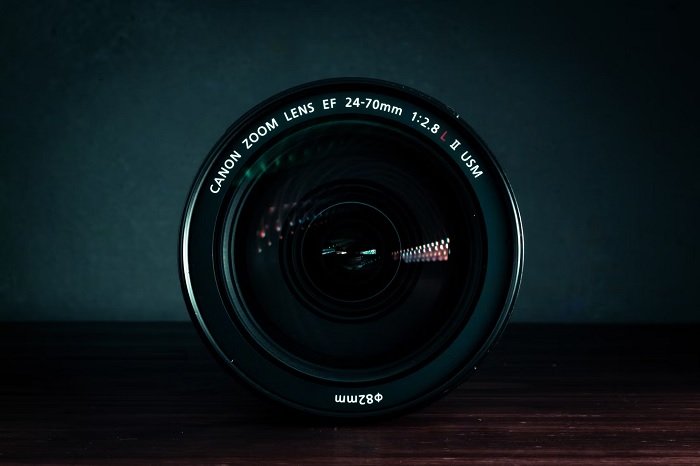But USM vs STM doesn’t have to be a source of confusion. We’ll help you understand what these letters stand for and the type of autofocus motor the Canon lenses use. And once you’re clued up on USM and STM lenses, you’ll be able to make an educated choice when buying your next lens. [Note: ExpertPhotography is supported by readers. Product links on ExpertPhotography are referral links. If you use one of these and buy something, we make a little bit of money. Need more info? See how it all works here.]
Usm Vs Stm: What Are the Differences Between USM and STM Lenses?
When you see USM or STM on a Canon lens, it identifies the type of autofocus system the lens uses. USM stands for Ultrasonic Motor. And STM stands for Stepping Motor. STM and USM lenses function in different ways. Both of them deliver excellent results as you’d expect from Canon. But they take different routes to get there. The differing functionality means photographers favor USM or STM lenses for different projects. And there’s also a difference in price between the two lens types. If you see a Canon lens without USM or STM, it has a direct drive (DC) motor. This is the more traditional motor used for autofocus in Canon lenses. This motor is found in older or more budget-friendly lenses. It’s still a good system. But you don’t get the benefits of the newer STM or USM lenses.
What is a USM Lens?
USM stands for Ultrasonic Motor. And a USM lens uses an ultrasonic motor to power the autofocus. USM lenses have become the most common in Canon’s lens catalog. You’ll see the majority of their newer EF-mount lenses are Canon USM lenses. A USM lens uses energy from ultrasonic vibrations to rotate the focus ring in the lens. And it can harness this power quickly and efficiently for a faster focus speed. While USM lenses are more expensive, there is a marked improvement from DC motor lenses. USM autofocus systems are quicker to focus. And while not silent, they are quieter than DC lenses. USM lenses have the quickest autofocus of any system in the Canon range. They can find focus in a fraction of a second. It’s much quicker than old DC motors and even quicker than STM lenses. That’s the reason for their universal popularity among professional photographers. I hate to confuse things further, but there are three types of USM lenses. There’s Ring-Type USM, Micro USM, and Nano USM. They are three technically distinct AF systems. But most photographers don’t need to know the details. We’ll take you through the basics for each USM lens type.
Ring-Type USM Lenses
A Ring-Type USM lens uses two rings to control the focus. One focus ring is connected to the AF group elements. And the other ring is connected to the lens barrel. To focus, one ring vibrates at ultrasonic frequencies. And this vibration causes the other ring to rotate, moving the elements into place. One popular feature of Ring-Type USM lenses is their full-time manual focusing (FTM). You can easily switch from auto to manual focusing. And some lens models allow you to use manual focus without flicking a switch.
Our Recommendations:
Canon EF 50mm f/1.4 USM Canon EF 70-200mm f/2.8L IS III USM
Micro USM Lenses
The Micro USM motor isn’t connected to the element group directly. Instead, Micro USM lenses use a gear-system motor. The ultrasonic vibrations move the gears, and the gears then move the glass to focus. A Micro USM motor is similar to a DC motor. But the ultrasonic vibration means it focuses a lot quicker. The problem with the Micro ultrasonic motor is the noise. A motor that uses gears has more moving parts, which means more noise. This can be a problem if you’re photographing wildlife or shooting video. Micro USM lenses also lack full-time manual focusing. That means you have less control over focusing, so you have to rely on the autofocus motor. The positives are that Micro USM lenses are lighter than other Canon USM lenses. They tend to be more affordable too.
Our Recommendations:
Canon EF 28-105mm f/4-5.6 USM Canon EF 18-200mm f/3.5-5.6 IS USM
Nano USM
The Nano USM combines high-speed autofocus with smoothness and silence. It’s a best-of-both-worlds solution. The first Nano USM lens was released in 2016 and it’s still a popular lens today. The Nano USM system is Canon’s latest AF technology. It’s not as common as Ring-Type USM lenses. But professional photographers are eager to get their hands on a Nano USM lens when they can. The Nano ultrasonic motor is similar to the Ring-Type. But the Nano USM motor moves the focus ring forward and back rather than rotating it. This allows for a smoother transition, giving you smooth subject tracking. The Nano USM lenses are popular with sports photographers. And more wildlife photographers are opting for a Nano USM lens for their silent operation.
Our Recommendations:
Canon EF-S 18-135mm f/3.5-5.6 IS USM Canon EF 70-300 f/4-5.6 IS II USM
What Are STM Lenses?
Canon lenses identified as STM lenses use a Stepping Motor. The STM lens motor uses gears to rotate the focusing element and ring. The stepping motor rotates in fixed steps, stopping after each movement. Despite the geared system, the Canon STM autofocus system is smooth and nearly silent. Canon developed STM lenses specifically for videographers. A DC or ultrasonic motor makes a noise when focusing or tracking. That noise can be picked up by microphones when recording and ruin the audio. And the whirring sound can be constant if the USM motors are tracking a moving subject. The first type of Canon STM lens uses helical gears to drive the autofocus system. It’s not the quick STM focusing motor. But it doesn’t take up much space in the lens body. That means geared STM Canon lenses tend to be light and compact. The second STM lens has a lead screw-type STM motor. It’s the larger of the two STM lenses, so this type of STM lens tends to be bigger and heavier. But lead screw STM lenses are faster at focusing and even quieter than the gear-type STM system. These Canon lenses give you near-silent focusing. One setback of the STM lens system is the lack of manual focusing. When the STM autofocus is working, you can’t override it by turning the focus ring by hand. You have to wait for it to stop and switch to manual focus. It’s not a big problem, but it can be a source of frustration when you’re shooting.
Our Recommendations:
Canon EF-M 55-200mm f/4.5-6.3 IS STM Canon EF 50mm f/1.8 STM Canon EF 10-18mm f/4.5-5.6 IS STM Canon EF 24-105mm f/3.5-5.6 IS STM
Canon USM vs STM: Which Lens is Best For You?
When it comes down to Canon STM vs USM, there are a few things to consider. Both types of Canon lenses have their pros and cons. And much of the STM vs USM debate comes down to your needs. USM lenses are the most common in Canon’s EF-mount range. Compared to the Canon DC and STM lenses, they are fast and accurate. No other AF motor system gives you that level of performance. Ring USM lenses are very popular. But the Nano USM is very much in demand. USM lenses are popular with photographers that need a rapid focusing speed. That includes sports and action photographers, bird photographers, and street photographers. They also allow for more manual control than the Canon STM lens system. Canon STM lenses were developed for videographers. Microphones can pick up the sound of a loud AF system, so they need a quiet autofocus motor. And the STM lens is the answer to that call. They’re nearly silent when focusing and tracking, especially the lead screw STM lenses. STM lenses are also popular with wildlife photographers. The silent motor allows them to remain unnoticed in the undergrowth. And some sports photographers also need silence to avoid disturbing the athletes when shooting. Price also plays a part in the Canon STM vs USM confrontation. USM lenses are expensive. The price of a new USM lens puts them in a lens category for wealthy enthusiasts or professional photographers. STM lenses are more budget-friendly. But the lower price doesn’t mean you’re getting a bad lens. Professional videographers will use STM lenses for their quiet operation. And while STM lenses are more popular among amateur photographers, many pros still go with an STM lens for their silent shooting and smooth tracking.
Conclusion: Street Photography Quotes
The confusion around Canon USM vs STM lenses can put your head in a spin. But once you know these names refer to the autofocus systems, the mystique is removed. And when you know how both lens systems perform, you can make better decisions when buying lenses. USM lenses are fast and accurate. But they make noise and cost a lot of money. STM lenses are quiet with a smooth tracking operation. Videographers love them, and there are more options for amateur photographers. Now you know exactly what you’re looking at in a Canon lens catalog. There’s no mystery around strange acronyms and you can buy a Canon lens with confidence. These lenses are great for wildlife photography, so check out our Wonderful Wildlife e-book to take stunning animal photos!







title: “Canon Usm Vs Stm Lenses What S The Difference " ShowToc: true date: “2023-01-03” author: “George Emmons”
But USM vs STM doesn’t have to be a source of confusion. We’ll help you understand what these letters stand for and the type of autofocus motor the Canon lenses use. And once you’re clued up on USM and STM lenses, you’ll be able to make an educated choice when buying your next lens. [Note: ExpertPhotography is supported by readers. Product links on ExpertPhotography are referral links. If you use one of these and buy something, we make a little bit of money. Need more info? See how it all works here.]
Usm Vs Stm: What Are the Differences Between USM and STM Lenses?
When you see USM or STM on a Canon lens, it identifies the type of autofocus system the lens uses. USM stands for Ultrasonic Motor. And STM stands for Stepping Motor. STM and USM lenses function in different ways. Both of them deliver excellent results as you’d expect from Canon. But they take different routes to get there. The differing functionality means photographers favor USM or STM lenses for different projects. And there’s also a difference in price between the two lens types. If you see a Canon lens without USM or STM, it has a direct drive (DC) motor. This is the more traditional motor used for autofocus in Canon lenses. This motor is found in older or more budget-friendly lenses. It’s still a good system. But you don’t get the benefits of the newer STM or USM lenses.
What is a USM Lens?
USM stands for Ultrasonic Motor. And a USM lens uses an ultrasonic motor to power the autofocus. USM lenses have become the most common in Canon’s lens catalog. You’ll see the majority of their newer EF-mount lenses are Canon USM lenses. A USM lens uses energy from ultrasonic vibrations to rotate the focus ring in the lens. And it can harness this power quickly and efficiently for a faster focus speed. While USM lenses are more expensive, there is a marked improvement from DC motor lenses. USM autofocus systems are quicker to focus. And while not silent, they are quieter than DC lenses. USM lenses have the quickest autofocus of any system in the Canon range. They can find focus in a fraction of a second. It’s much quicker than old DC motors and even quicker than STM lenses. That’s the reason for their universal popularity among professional photographers. I hate to confuse things further, but there are three types of USM lenses. There’s Ring-Type USM, Micro USM, and Nano USM. They are three technically distinct AF systems. But most photographers don’t need to know the details. We’ll take you through the basics for each USM lens type.
Ring-Type USM Lenses
A Ring-Type USM lens uses two rings to control the focus. One focus ring is connected to the AF group elements. And the other ring is connected to the lens barrel. To focus, one ring vibrates at ultrasonic frequencies. And this vibration causes the other ring to rotate, moving the elements into place. One popular feature of Ring-Type USM lenses is their full-time manual focusing (FTM). You can easily switch from auto to manual focusing. And some lens models allow you to use manual focus without flicking a switch.
Our Recommendations:
Canon EF 50mm f/1.4 USM Canon EF 70-200mm f/2.8L IS III USM
Micro USM Lenses
The Micro USM motor isn’t connected to the element group directly. Instead, Micro USM lenses use a gear-system motor. The ultrasonic vibrations move the gears, and the gears then move the glass to focus. A Micro USM motor is similar to a DC motor. But the ultrasonic vibration means it focuses a lot quicker. The problem with the Micro ultrasonic motor is the noise. A motor that uses gears has more moving parts, which means more noise. This can be a problem if you’re photographing wildlife or shooting video. Micro USM lenses also lack full-time manual focusing. That means you have less control over focusing, so you have to rely on the autofocus motor. The positives are that Micro USM lenses are lighter than other Canon USM lenses. They tend to be more affordable too.
Our Recommendations:
Canon EF 28-105mm f/4-5.6 USM Canon EF 18-200mm f/3.5-5.6 IS USM
Nano USM
The Nano USM combines high-speed autofocus with smoothness and silence. It’s a best-of-both-worlds solution. The first Nano USM lens was released in 2016 and it’s still a popular lens today. The Nano USM system is Canon’s latest AF technology. It’s not as common as Ring-Type USM lenses. But professional photographers are eager to get their hands on a Nano USM lens when they can. The Nano ultrasonic motor is similar to the Ring-Type. But the Nano USM motor moves the focus ring forward and back rather than rotating it. This allows for a smoother transition, giving you smooth subject tracking. The Nano USM lenses are popular with sports photographers. And more wildlife photographers are opting for a Nano USM lens for their silent operation.
Our Recommendations:
Canon EF-S 18-135mm f/3.5-5.6 IS USM Canon EF 70-300 f/4-5.6 IS II USM
What Are STM Lenses?
Canon lenses identified as STM lenses use a Stepping Motor. The STM lens motor uses gears to rotate the focusing element and ring. The stepping motor rotates in fixed steps, stopping after each movement. Despite the geared system, the Canon STM autofocus system is smooth and nearly silent. Canon developed STM lenses specifically for videographers. A DC or ultrasonic motor makes a noise when focusing or tracking. That noise can be picked up by microphones when recording and ruin the audio. And the whirring sound can be constant if the USM motors are tracking a moving subject. The first type of Canon STM lens uses helical gears to drive the autofocus system. It’s not the quick STM focusing motor. But it doesn’t take up much space in the lens body. That means geared STM Canon lenses tend to be light and compact. The second STM lens has a lead screw-type STM motor. It’s the larger of the two STM lenses, so this type of STM lens tends to be bigger and heavier. But lead screw STM lenses are faster at focusing and even quieter than the gear-type STM system. These Canon lenses give you near-silent focusing. One setback of the STM lens system is the lack of manual focusing. When the STM autofocus is working, you can’t override it by turning the focus ring by hand. You have to wait for it to stop and switch to manual focus. It’s not a big problem, but it can be a source of frustration when you’re shooting.
Our Recommendations:
Canon EF-M 55-200mm f/4.5-6.3 IS STM Canon EF 50mm f/1.8 STM Canon EF 10-18mm f/4.5-5.6 IS STM Canon EF 24-105mm f/3.5-5.6 IS STM
Canon USM vs STM: Which Lens is Best For You?
When it comes down to Canon STM vs USM, there are a few things to consider. Both types of Canon lenses have their pros and cons. And much of the STM vs USM debate comes down to your needs. USM lenses are the most common in Canon’s EF-mount range. Compared to the Canon DC and STM lenses, they are fast and accurate. No other AF motor system gives you that level of performance. Ring USM lenses are very popular. But the Nano USM is very much in demand. USM lenses are popular with photographers that need a rapid focusing speed. That includes sports and action photographers, bird photographers, and street photographers. They also allow for more manual control than the Canon STM lens system. Canon STM lenses were developed for videographers. Microphones can pick up the sound of a loud AF system, so they need a quiet autofocus motor. And the STM lens is the answer to that call. They’re nearly silent when focusing and tracking, especially the lead screw STM lenses. STM lenses are also popular with wildlife photographers. The silent motor allows them to remain unnoticed in the undergrowth. And some sports photographers also need silence to avoid disturbing the athletes when shooting. Price also plays a part in the Canon STM vs USM confrontation. USM lenses are expensive. The price of a new USM lens puts them in a lens category for wealthy enthusiasts or professional photographers. STM lenses are more budget-friendly. But the lower price doesn’t mean you’re getting a bad lens. Professional videographers will use STM lenses for their quiet operation. And while STM lenses are more popular among amateur photographers, many pros still go with an STM lens for their silent shooting and smooth tracking.
Conclusion: Street Photography Quotes
The confusion around Canon USM vs STM lenses can put your head in a spin. But once you know these names refer to the autofocus systems, the mystique is removed. And when you know how both lens systems perform, you can make better decisions when buying lenses. USM lenses are fast and accurate. But they make noise and cost a lot of money. STM lenses are quiet with a smooth tracking operation. Videographers love them, and there are more options for amateur photographers. Now you know exactly what you’re looking at in a Canon lens catalog. There’s no mystery around strange acronyms and you can buy a Canon lens with confidence. These lenses are great for wildlife photography, so check out our Wonderful Wildlife e-book to take stunning animal photos!






